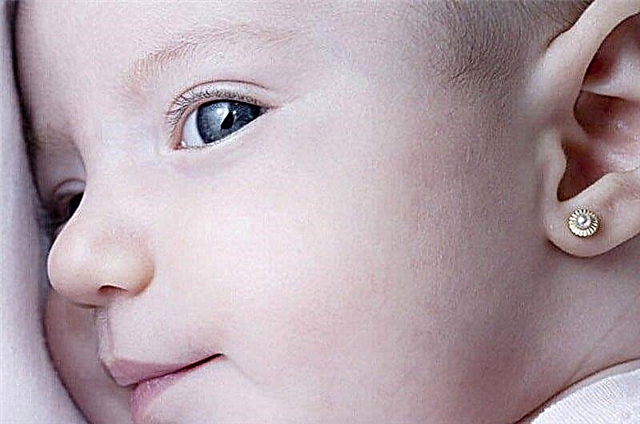
When a newborn is anxious, mothers often consider using a pacifier. Is it worth using it, how to choose the right one and how to teach a child to it?
Pros
The dummy helps:
- Stop baby crying.
- Adjust the feeding schedule.
- Facilitate the passing of gas, thereby helping with colic.
- Get ready for a walk faster.
- Wait your turn at the clinic and other institutions.
- Try on clothes for your baby.
- Go shopping with your baby.
- Calm and distract the baby on the trip.
This hygienic product is also able to save with frequent awakenings at night, help during teething, become an obstacle to picking up something on the street and chewing on everything in the apartment, as well as sucking a finger.

Cons: is it worth it?
Disadvantages of pacifiers, such as negative effects on bite, breastfeeding and speech development, have long been considered irrelevant. If you choose the right product, it does not harm the development and health of the baby.
However, pacifiers do have their drawbacks:
- A kid accustomed to it is more at risk of catching an infection.
- A baby with a pacifier while waiting to be fed may fall asleep hungry.
- Withdrawal can also be a problem.
In cases where there is no special need for it, it is not recommended to accustom to it.

E. Komarovsky's opinion
A well-known doctor advises against giving a pacifier to an infant if the mother has any problems with the amount of milk. He reminds that the baby has a sucking reflex to absorb breast milk. And if you direct this reflex to a dummy, then the baby's effect on mother's nipples will be less intense. This can be crucial for lactation.
At the same time, it happens that it does not in any way affect either the amount of milk or the sucking of the baby's mother's breast. If the baby has a strongly pronounced sucking reflex, then the dummy is able to help out mommy by freeing her breasts for a short time and ensuring silence in the room.
At what age can you give it?
You can offer a baby a pacifier from birth, but some mothers give babies a pacifier at a month, at six, and even at a year or 1.5 years, for example, during weaning. This is not prohibited, but the appropriateness of training must be considered individually. A newborn is advised to give it at a time when the mother's milk production has already improved (usually on the third or fifth day after birth).

How to choose the right one?
The baby may not recognize the pacifier due to its strong difference from the mother's nipple. And therefore for newborns, they are produced in a similar shape to the female nipple. They are anatomically suitable for a child's mouth.

Also, a crumb may not take a pacifier due to the wrong size, shape or material. It is recommended to purchase several options for pacifiers for the baby (of different shapes and from different manufacturers), giving the baby the opportunity to independently choose the most suitable product for himself.
When choosing, pay attention to the age marking on the product. The assortment of pacifiers in children's stores is presented by categories for newborns under 3 months old, babies 3-6 months old, as well as children over 6 months old.
Also, pacifiers differ in material. They come in latex or silicone. The kid may give preference to any one material. Latex products are softer and more often offered to newborns.
Tricks
- It is much easier to accustom an artificial baby to a pacifier, since such a child is already familiar with the pacifier. But in teaching a baby to breastfeed, you have to resort to different tricks:
- Sometimes it is recommended to grease it with something sweet - honey or jam. In this case, you need to be careful, as babies may be allergic to such sweets.
- You can also lubricate the product with mother's milk. The kid will react to the familiar taste and will take it. If the baby is bottle-fed, this trick can be done with formula.
- It is recommended to slip it on to the baby immediately after breastfeeding, replacing the mother's nipple with it and without changing the position of the baby.
- You can give your baby water or bottle feed, and then offer a pacifier that will follow the shape of the nipple on the bottle.

Tips
- More often than not, a child does not want to take a pacifier due to the wrong size, shape or material. Therefore, you first need to influence these factors. Be prepared for the fact that you will have to try several pacifiers before the baby chooses "her".
- Boil the product before first use. This is also recommended for every use.
- After four to six weeks of use, replace the old product with a new one.
- A special case is best suited for carrying a pacifier. Do not wear the product with an elastic or a ribbon tied around a child's neck.
- You should not lick it before giving it to your baby. Parental saliva can contain bacteria that are harmful to the baby.
- For the period of sleep, it is recommended to take it out or replace it with a special product suitable for use at night.
- It is convenient to keep several pacifiers in the house at once (about five). They should be sterilized in their cases.
- Offer your baby a pacifier when he is full but still needs to suck.
- Remember that there are children who categorically do not recognize her. Do not be upset if your kid does not like this accessory, but respect his choice.



